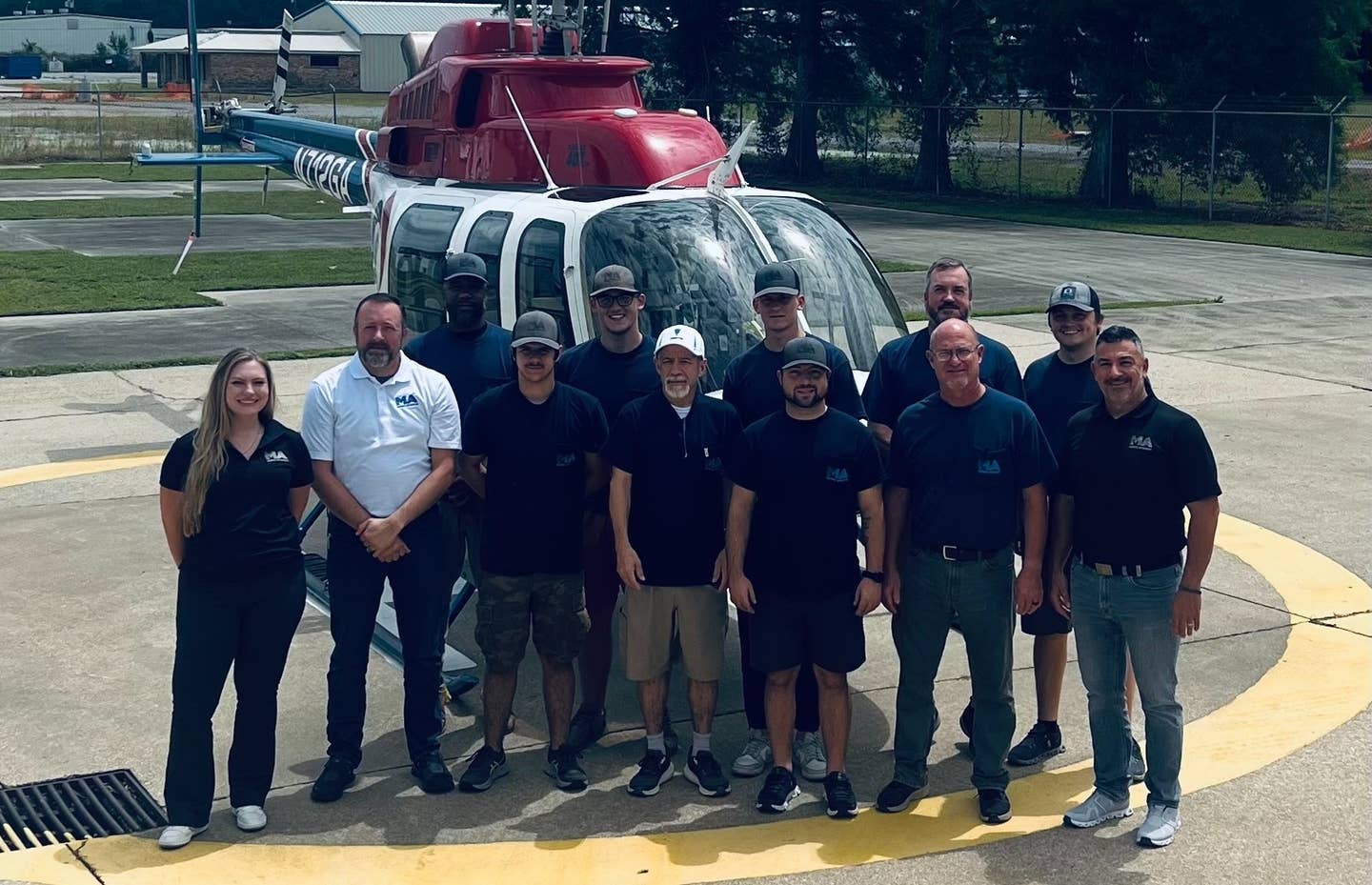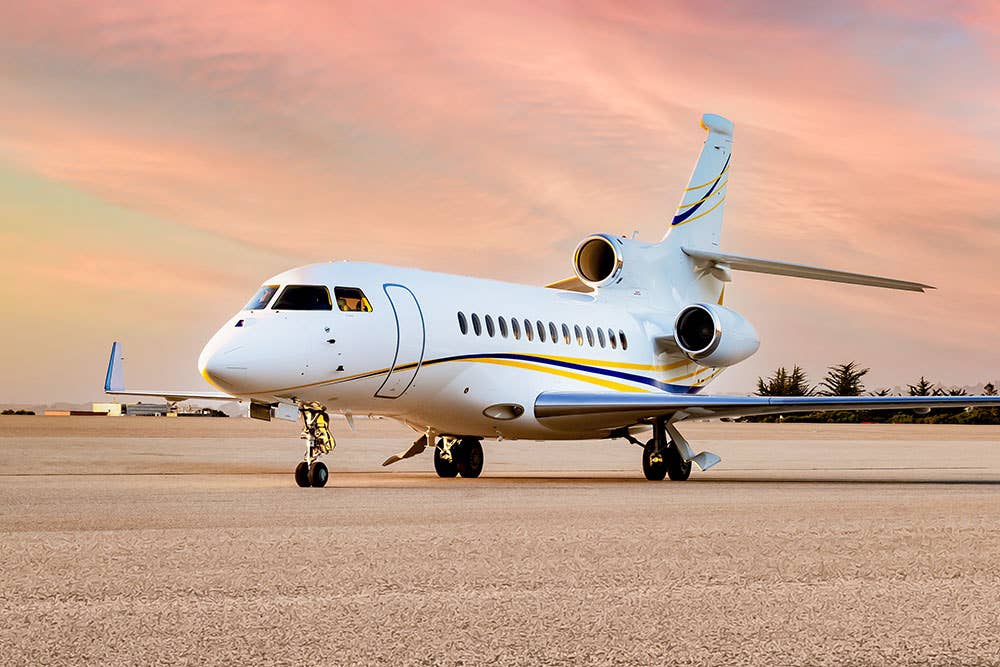
The CAP offers various scholarships toward academic programs and flight training. It also offers the Youth Aviation Initiative. Civil Air Patrol
The dream of achieving a pilot certificate is one that some people think is impossible, particularly if the cost of flight instruction feels like a challenging barrier. While many pilots save up or take out loans to pay their way, there are other roads to the ultimate destination that not only lower the cost—and in some cases foot the entire bill—but also include the support and mentorship that greatly increase the chances of success. Here are some alternatives to help you on the road to the airways. While most of these paths are limited to youth still in school, there are options for adults too.
Young Eagles
With the exception of those who were fortunate enough to grow up with a family member who is a pilot, many aviation enthusiasts found or reaffirmed their passion for aviation through a flight with the Young Eagles, a program conceived by the Experimental Aircraft Association. Since the program started in 1992, more than 2.2 million kids have experienced the magic of observing life on Earth from above in a private airplane, flown by one of about 40,000 volunteer pilots.
There is no cost for that first flight, but you have to be between 8 and 17 years old to qualify. A parent simply needs to connect with a Young Eagles coordinator, who will schedule a flight with a qualified pilot. You can also search for scheduled Young Eagles events in your area.
After the introductory flight, young aviators can continue their flight education and training through the Young Eagles Flight Plan program. The program provides a free EAA Student Membership, which includes access to Sporty’s Learn To Fly online ground-school training materials, a voucher to cover the cost for the first flight lesson, access to multiple flight scholarships and more. You must be at least 13 years old for the first official lesson through the program.
Whether young or old, you can apply for the EAA’s many flight training scholarships, which offer as much as $10,000 toward a private, sport or recreational pilot certificate, as well as funding toward aviation-related postsecondary education.
Going through the Young Eagles program is also a great way to become a competitive applicant for the Civil Air Patrol’s Cadet Wings program.
Civil Air Patrol
Formed in 1941 to assemble civilian pilots willing to assist the military during World War II, the CAP is an auxiliary of the United States Air Force. Today, the CAP has three main missions: emergency services, aerospace education and cadet programs. As a CAP cadet, you could potentially earn your private pilot certificate at no cost.
The CAP offers various scholarships toward academic programs and flight training. It also offers the Youth Aviation Initiative. The YAI is broken into three segments: the Take-Off Program - TOP Cadet (a weeklong powered- and glider-flight academy), Lift Program (a weeklong career exploration initiative) and Cadet Wings, which provides funded training for the private pilot certificate in a powered airplane, glider or balloon. Not only is the funding for the certificate covered, the structured program helps candidates stay on track, which increases the chances of success.
Candidates must complete their certificate within six months of starting the Cadet Wings program. “It gives aviation-crazy cadets who have the drive and discipline the chance to get their license,” says Emma Herrington, who became the first CAP cadet to earn her PPC through the Cadet Wings program in early 2019. “Without the help of Cadet Wings, I would have been unable to afford my flight training.”
Acceptance into the Cadet Wings program is competitive, and cadets must earn their way to the cockpit by developing knowledge related to leadership, fitness, character, aerospace and core values of the CAP through several activities, courses and tests. Cadets are expected to wear a uniform and attend regular squadron meetings. Along the way, cadets are encouraged and motivated through achievement awards, which are granted after completing a list of tasks that fulfill each one of four phases.
Cadets who have completed phase two of the Cadet Wings program—the leadership phase—earn the Mitchell Award, which gives cadets a greater chance of being accepted into one of the pilot programs in the US Air Force. In fact, the CAP says 10 percent of the cadets in the US Air Force Academy came from its programs. If your ultimate goal is to be a fighter pilot, the CAP is a great place to start.
Military
If you are one of many young men and women who think military aircraft are the coolest, you’re in luck. Like the airlines, the military has been begging for pilot candidates for the past few years (though the novel coronavirus has put the brakes on pilot hiring in the near-term).
Taking the military route to becoming a pilot won’t require a financial commitment but rather a commitment in time—generally about 10 years, not including the time in school. There are several military-pilot service opportunities: Navy, Air Force, Army, National Guard, Coast Guard and Border Patrol.
One way to get to a military aircraft seat is through one of the service academies. These four-year universities, which are limited to people between the ages of 17 and 23, offer elective aviation classes that include flight training. After graduation, you can apply for Specialized Undergraduate Pilot Training. The SUPT flight training program is rigorous, to say the least. “You go from first flight to first solo in under 10 flights,” says Matt Beaubien, a U-2 pilot at the Beale Air Force Base in California, of his experience at the US Air Force UPT. “Then you learn instruments and formation flying. It all happens in a matter of months.”
Another route to a military aircraft seat is through the Reserve Officer Training Corps. ROTC programs vary and are offered through 1,700 colleges and universities around the country. The ROTC scholarships at the University of North Dakota, for example, cover tuition, room and board, books and supplies, and flight training fees, with no commitment to sign with the military. However, many of the students do commit to the service once they graduate.
Scholarships
Whether you’re younger or older, there are a slew of scholarships available to pay for part of or, in some cases, all of the cost of initial and advanced flight training. Here are just a few examples of organizations that, like the EAA, offer multiple scholarships.
AOPA
This past year, the Aircraft Owners and Pilots Association handed out 123 scholarships totaling more than $1 million toward primary and advanced flight training. The bulk of the scholarships, 80 to be exact, went to high school students who each received $10,000 toward a recreational, sport or private pilot certificate. Flight training scholarships of $10,000 were also awarded to 20 teachers who used AOPA’s High School Aviation STEM Curriculum.
Aspiring pilots who are not high school students or teachers are eligible for AOPA’s general scholarships for primary flight training, ranging from $2,500 to $7,500, and advanced ratings—such as an instrument rating or commercial, CFI, CFII or MEI certificate—with awards ranging from $3,000 to $10,000.
Minority Organizations
Women still represent only a small fraction of the pilot population. As a result, several associations exist that focus on helping women enter aviation fields. Two of the most prodigious women-pilot organizations are Women in Aviation International and the Ninety-Nines. While the mentorship and millions of dollars’ worth of scholarships offered through these groups are targeted toward women, men are not excluded.
I personally benefited greatly from scholarships granted by both the WAI and the Ninety-Nines. A WAI scholarship sponsored by AOPA paid my way to attend the Women in Aviation conference in 2000, right after I started my initial flight training. The experience was invaluable because I was able to network with professional pilots and learn about other jobs in the industry. I also received a financial scholarship from the San Fernando Valley Chapter of the Ninety-Nines that helped pay for my initial training. Most chapters—there are 155 of them—offer scholarships for local members, and the national organization grants high-valued scholarships toward initial and advanced pilot certificates, jet type ratings, college degrees, technical training and emergency-maneuvers flight training.
The Organization of Black Aerospace Professionals, the Latino Pilots Association and the National Gay Pilots Association are other minority groups that offer scholarships that might help on your quest.
Flying Clubs
Flying clubs are groups of pilots who gain access to airplanes through a membership fee. Members can generally access their airplanes at a lower hourly cost than conventional flight school rentals. Many flying-club members and private owners are often looking for an excuse to fly. If you’re in pursuit of your first flight experience but don’t have the means to pay for it, simply head down to your local airport and transform yourself into an “airport bum.” You are almost guaranteed to find someone who is willing to take you up. If that person is a member of a flying club, you could have a foot in the door.
Chris Gregg, a private pilot who is currently working on his instrument rating while building time toward his commercial certificate, is a member at the Gopher Flying Club at the Crystal Airport in Minneapolis. Gregg completed his private certificate at a local flight school. Currently, the school is charging $144 per hour for its Piper Cherokee fleet. The cost is charged by the hour on the Hobbs meter, so as soon as the airplane cranks up, the bill starts accruing.
The Gopher Flying Club cost, on the other hand, is around $90 per hour for a Cessna 172, according to Gregg. Adding to the savings, the tachometer (which is based on engine rpm rather than the time the propeller is spinning) is used to charge for flight time. Furthermore, the instructor cost ranges from $50 to $65 per hour, as opposed to $70 to $85 at the local flight school. There is an initiation fee of $300 and $60 in monthly dues, so you really only have to fly an hour or two a month to make the club membership worthwhile.
There are, however, some potential drawbacks with flying clubs. Gregg has had some problems accessing airplanes because of maintenance. While flight schools often have a mechanic on-site or agreements with local mechanics to get the work done quickly, maintenance for a flying club can be more unreliable. Generally, flying clubs offer access to fewer airplanes, making maintenance cancellations more likely than at a traditional flight school. Likewise, flight-instructor availability is generally more reliable at a traditional flight school.
The quality of flying clubs varies widely, so whether they can provide a viable alternative for you really depends on where you live. AOPA has an extensive, countrywide searchable database that includes 1,431 clubs (some of which are in the formative stages). They are worth exploring.
As you can see, there are many pathways to the air that won’t require a large financial commitment. You might find many more with thorough research. While some of these suggestions require a significant commitment in time, others only make you pay with the time it takes to fill out an application. A little effort can go a long way toward achieving your dream.
This story appeared in the June/July 2020 issue of Flying Magazine

Subscribe to Our Newsletter
Get the latest FLYING stories delivered directly to your inbox






